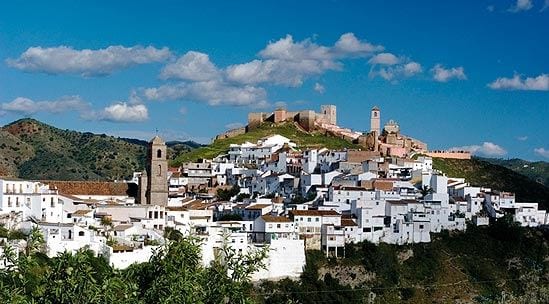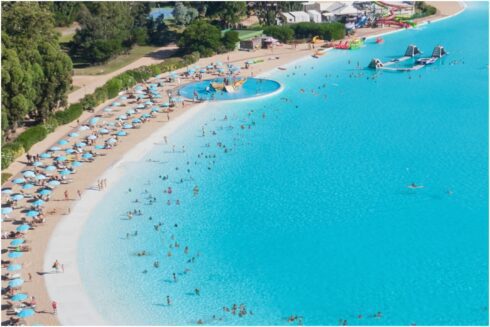AWAY from the hustle and bustle of vibrant Coin and Alhaurin, a sleepy, white-washed Andalucian pueblo sits waiting to be explored.

Despite keeping its fascinating history to itself with unwarranted modesty, Alora has blossomed into a hive of cultural activity.
Marked out by its stunning Arabic castle atop Cerro de las Torres hill, the sprawling streets are brought to life through Moroccan and Roman influences before them.
However, the castle is even older and was originally built by Phoenicians, before being expanded under Roman rule. And later destroyed by Visigoths in the fifth century before the Moors finally came and rebuilt it.
The Muslim minaret is still clearly visible today, protruding defiantly from the elegant and immaculately preserved castle.
I was lucky enough to receive a tour of the castle, built in 1462, from local history expert and museum worker, Maria Jose.
“You can see evidence of all the different ages of the castle, it is so interesting and such a shame that so few people come and see it,” she said.
It is a wonderful place to visit, but unfortunately the castle is not often open to the public.
A short walk down narrow traditional streets leads to the town’s lowest-lying square. Here stands the impressive 17th century Catholic church of La Encarnacion, which somehow appears to be even larger on the inside.
Adjoining the church is the municipal museum, complete with ancient pottery, historical displays and intense mustiness.
It is a Mudejar construction dating from the 16th century and supported by stone pillars and columns.
“Alora is such a wonderful town, there is so much culture to see in the artists, history and of course, the best food in the region is here,” explains local tour operator Kora Buggel, who is hoping to organise tours of the castle and village.
Hidden right in the heart of the town is an old molino, where olive oil was traditionally produced but it is now used for the occasional concert.
Various small museums and bars have sprung up in the centre since the turn of the century, as this town continues its legacy as one of the most important settlements in the Guadalhorce Valley.
It is certainly a fairly bustling place, much busier than I had imagined.
One of the highlights was the small bodega belonging to José Miguel Pérez Hidalgo, which produces a range of wines from the Guadalhorce Valley’s vineyards, and offers tasting sessions to organised groups.
At the foot of the hill on which Alora rests is railway station, and it was here, just three years ago, where the houses were struck by a terrible flood, killing livestock and destroying homes.
From the castle it is easy to see where the river ripped apart a bridge, separating Barriada Estacion from neighbouring Barriada del Puente.
David McGovern, owner of Manhattan bar opposite Alora train station, recalls the water flooding all of the surrounding buildings, reaching metres high.
“It was awful, people lost all of their possessions and were left homeless for 18 months,” he said.
“I gave my Nike trainers to a man who lives just across the river from us, and he’s still wearing them now!”
But the area has recovered and risen again, with hourly trains bringing visitors up to the town from Malaga.
And those who travel when the sun goes down continue to be treated to one of Alora’s most stunning sites. The castle, lit up like a halo, is utterly alluring at night… A sight not to be missed.








